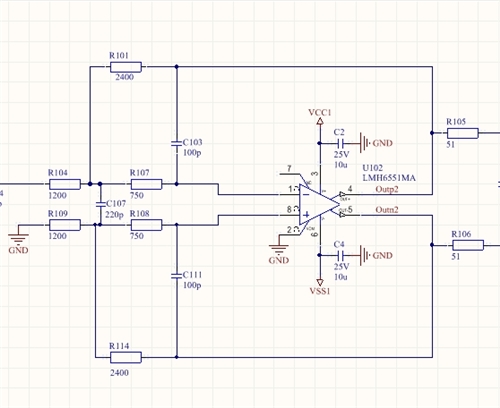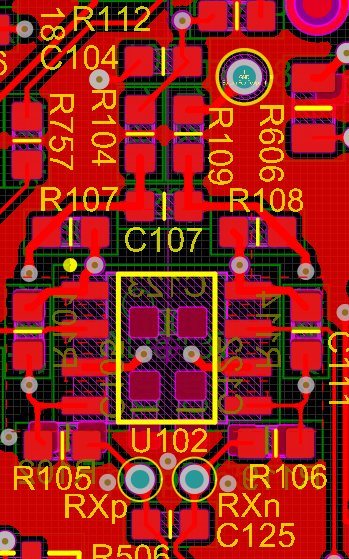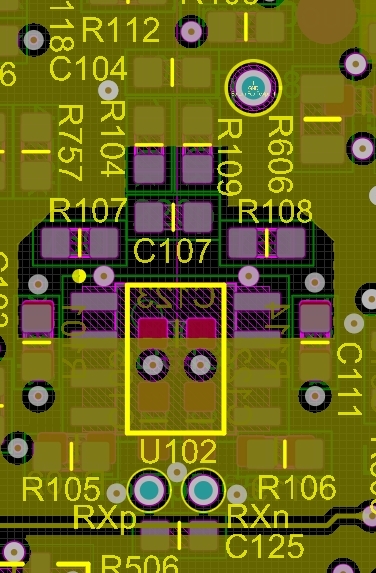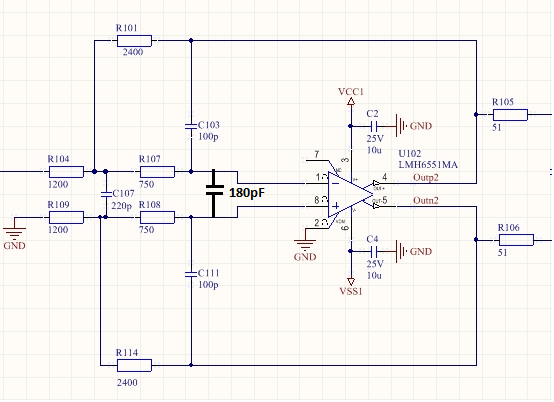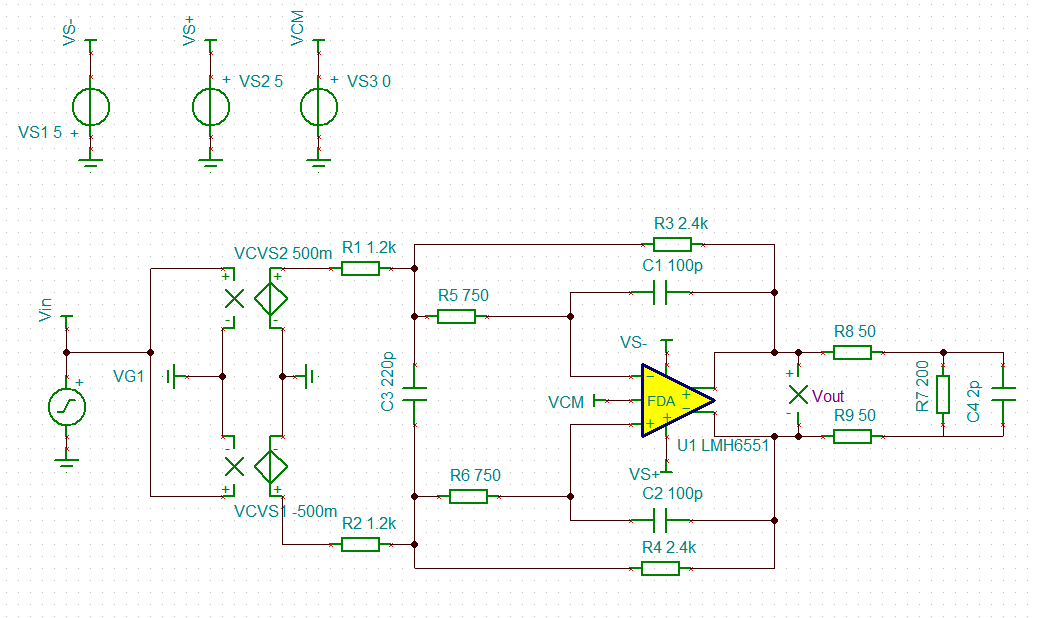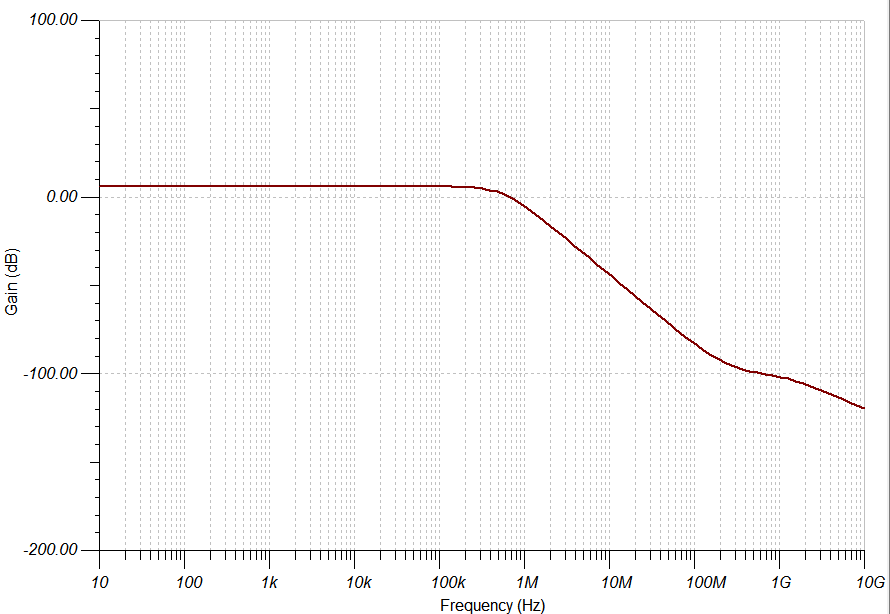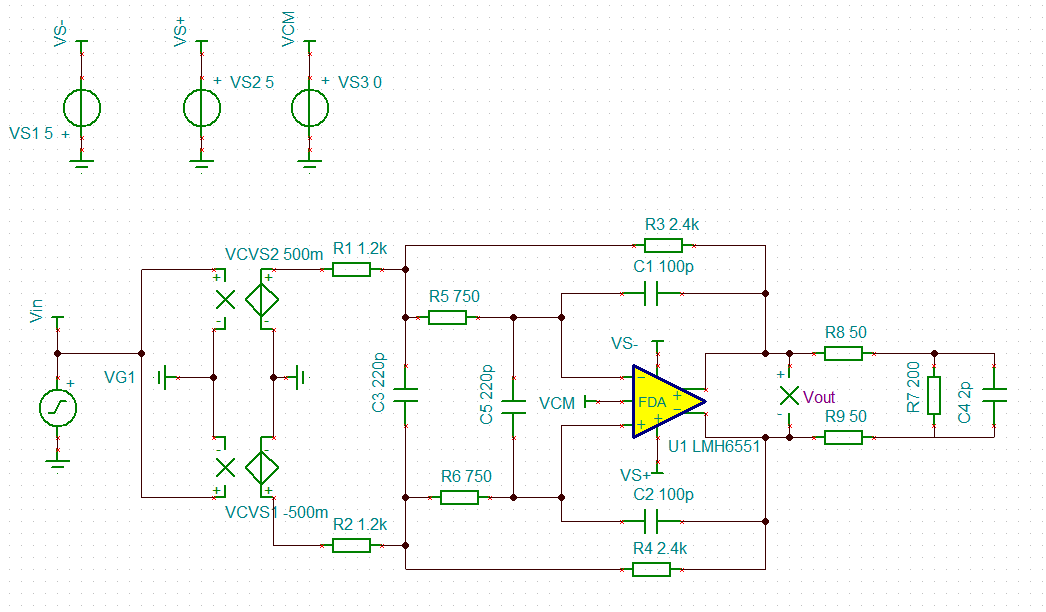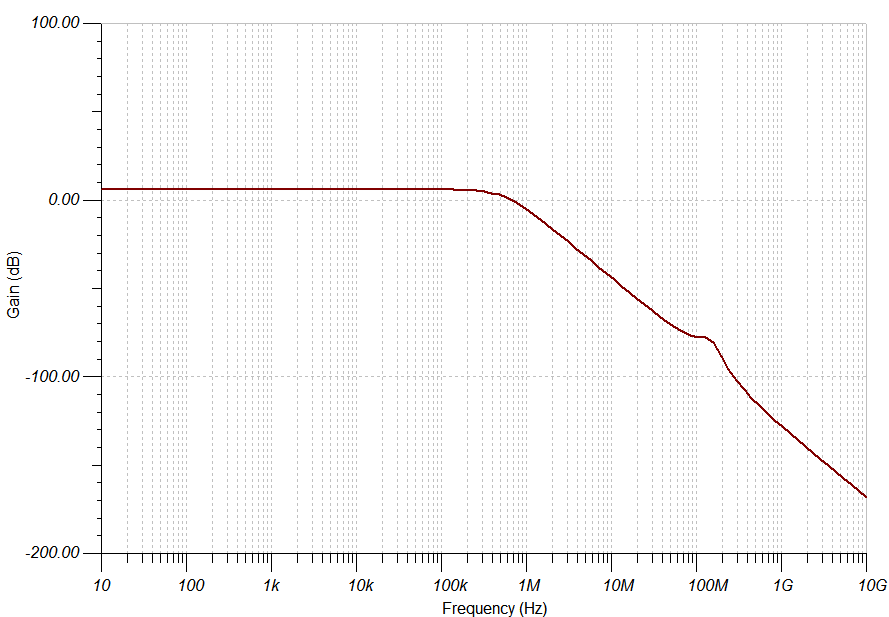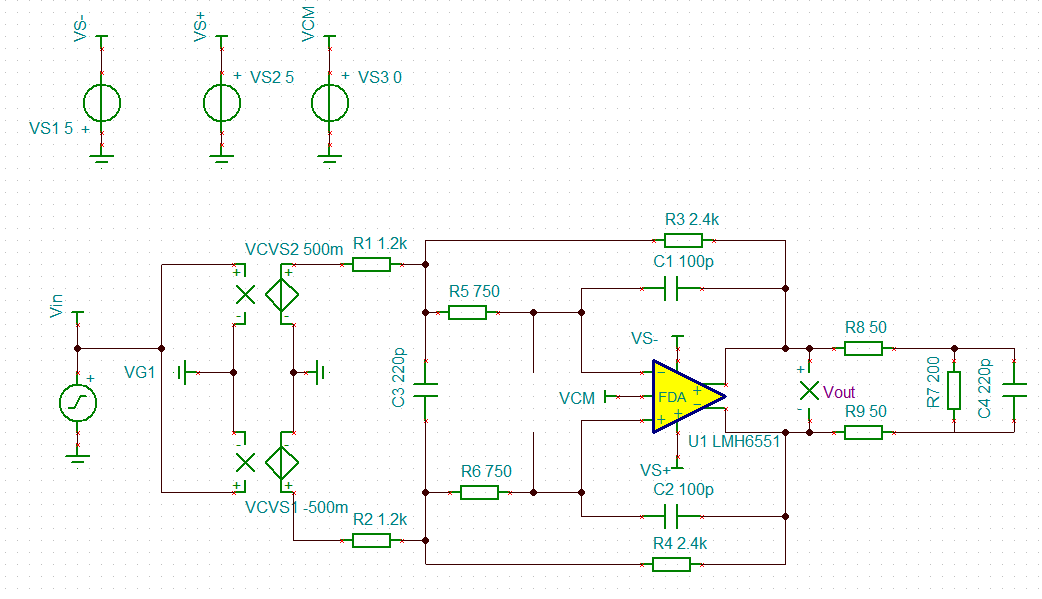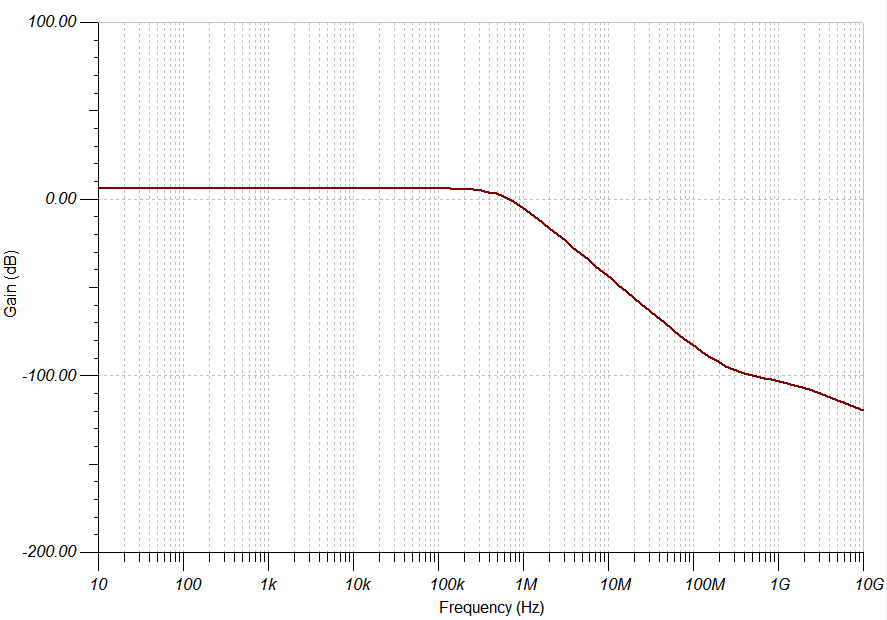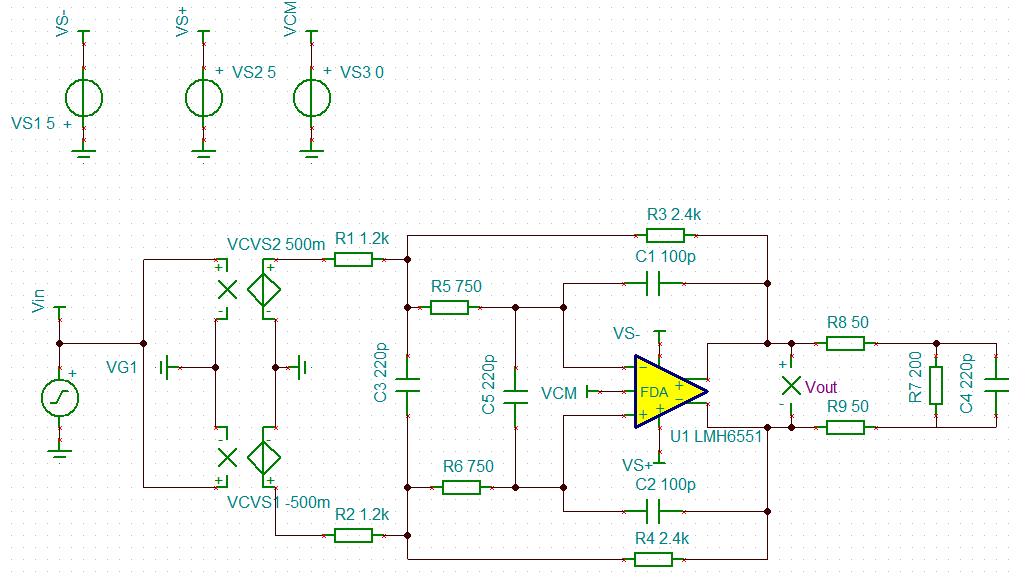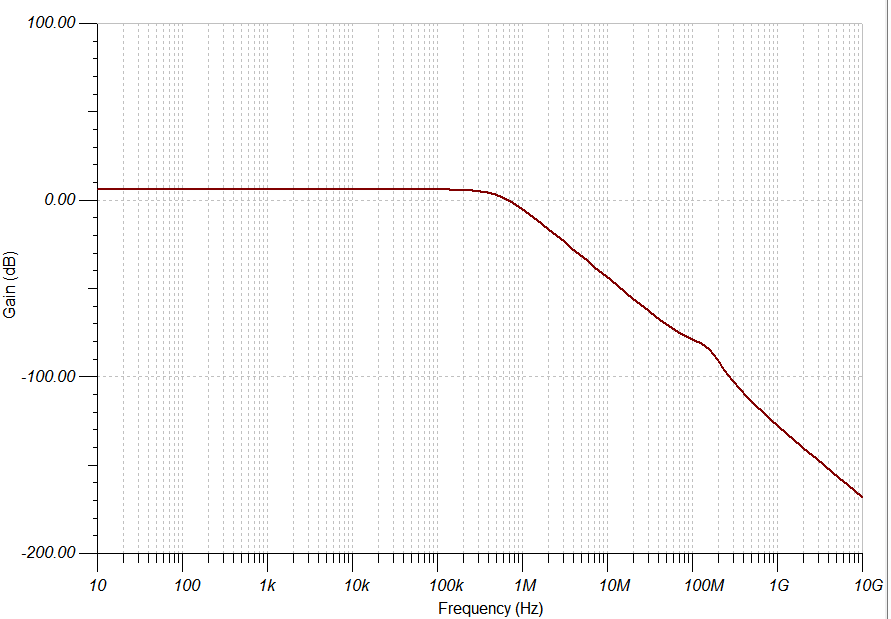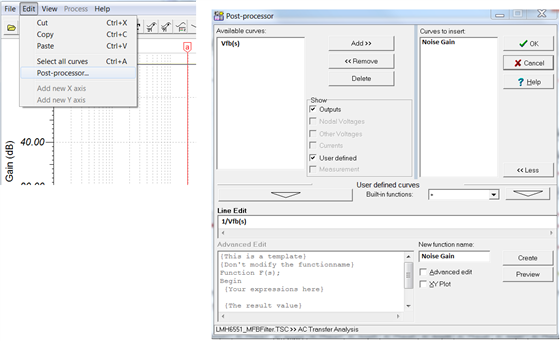I haven not been using differential amplifiers a lot and I bumped into this problem.
I have calculated this LPF with filter pro and when I build it on the PCB, this filter keeps oscillating until I add a capacitor C125) after the 51 ohm resistors R105, R106.
It ocillates at about 180 MHz even when I have both inputs open. The tracks to the connector are only 3 cm longand differentially routed wth equal length.
I tried this circuit with a GND plane just below the top layer to provide a solid GND and I tried a layout where I gave the GND on a layer more away from the toplayer. like shown here in the images. As can be seen I kept the circuit as symmtrical as I could and avoided GND inderneath the input pins of the IC
Schematic
Top layer
Inner layer
Bottom layer


